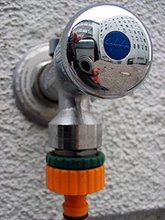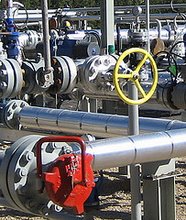A valve is a product rarely noticed by the average person, yet it plays an important role in the quality of our life. Each time you turn on a water faucet, use your dishwasher, turn on a gas range, or step on the accelerator of your car, you operate a valve. Without modern valve systems, there would be no fresh pure water or automatic heat in your home.
There would be no public utilities, and beyond wood and coal, almost no energy of any kind. Plastics would be unheard of, as would many inexpensive consumer products.
By definition, a valve is a device that controls the flow of a fluid. Today's valves can control not only the flow, but the rate, the volume, the pressure or the direction of liquids, gases, slurries or dry materials through a pipeline, chute or similar passageway. They can turn on and turn off, regulate, modulate, or isolate. They can range in size from a fraction of an inch to as large as 30 feet in diameter and can vary in complexity from a simple brass valve available at the local hardware store to a precision-designed, highly sophisticated coolant system control valve, made of an exotic metal alloy, in a nuclear reactor.
Valves can control flow of all types, from the thinnest gas to highly corrosive chemicals, superheated steam, abrasive slurries, toxic gases and radio active materials. They can handle temperatures from cryogenic region to molten metal, and pressures from high vacuum to thousands of pounds per square inch.







